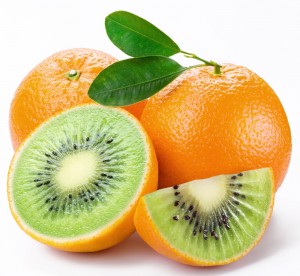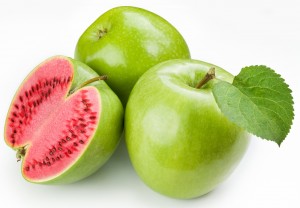Genetically Modified Organisms (GMO)
 How do advances in biotechnology affect the nutritional quality of our food? Historically, humans have realized that the tastiest and most abundant fruit could be selected and replanted the next season. Food crop’s genes change continuously by natural mutation and recombination. Today, advances in our understanding of genetics and molecular biology are permitting scientists to find specific genes that can be moved from one species to another. Genetic material can be transferred from viruses, bacteria, plants, and animals to produce significant changes in the original species. Unlike traditional breeding, gene transfer allows the transfer of genes between organisms of different species. It also permits the transfer of only specifically selected genes to produce the desired outcome in a controlled laboratory setting. Terms frequently used to describe the gene transfer and modification of plants and animals include: Genetically Modified Organisms (GMO), Genetically Engineered (GE) and Biotechnology-Derived (BD).
How do advances in biotechnology affect the nutritional quality of our food? Historically, humans have realized that the tastiest and most abundant fruit could be selected and replanted the next season. Food crop’s genes change continuously by natural mutation and recombination. Today, advances in our understanding of genetics and molecular biology are permitting scientists to find specific genes that can be moved from one species to another. Genetic material can be transferred from viruses, bacteria, plants, and animals to produce significant changes in the original species. Unlike traditional breeding, gene transfer allows the transfer of genes between organisms of different species. It also permits the transfer of only specifically selected genes to produce the desired outcome in a controlled laboratory setting. Terms frequently used to describe the gene transfer and modification of plants and animals include: Genetically Modified Organisms (GMO), Genetically Engineered (GE) and Biotechnology-Derived (BD).
Nutritional Content of Food
Ways the nutrient profile and density of a food can be altered include: gene modification, agricultural growing and feeding practices, conventional plant breeding and selection, and vitamin biofortification. A gene selected for modification can increase or decrease the vitamin, mineral or fatty acid content found in the modified food. For example, golden rice is genetically altered to increase its beta carotene content. Sometimes when one nutrient is increased another will decrease as an unintended consequence. For example, canola oil genetically engineered to contain vitamin A has reduced vitamin E levels. Growing and feeding practices such as grass-fed versus corn-based animal husbandry, and wild versus farm-raised fish, alters the animal’s fatty acid profile. The amount of omega-3 fatty acids found in eggs varies depending upon the chicken’s diet. Conventional plant breeding and selection can also change the nutritional profile, and has been practiced for a very long time. Finally, grains and cereals are frequently fortified with iron and vitamins before being marketed without the need for genetic modification.
There are intended and unintended consequences of gene modification. Some of the intended goals driving the genetic modification of food include an altered nutritional profile, longer shelf life, and better texture and flavor. Other goals include improved agronomic characteristics such as insect and disease resistance, and herbicide and climate tolerance. For example, plant geneticists can isolate a gene responsible for drought tolerance and insert that gene into a different plant. The new genetically modified plant will then be drought tolerant as well. As the world population grows, perhaps genetic modification can increase crop yields.
 The unintended consequences of genetic modification include an increased potential for new allergens in the food supply, antibiotic resistance, toxicity and environmental challenges. Genetic modification ultimately results in the introduction of new proteins into the food supply. True antibody mediated food allergies are an important health issue occurring in approximately 2% of adults and nearly 5% of children. Protecting people with food allergies from unwanted exposure to these new proteins represents a major public health challenge for genetically modified sources of food. Additionally, consumption of foods genetically modified by using “antibiotic resistance markers” may reduce the effectiveness of antibiotics to fight bacterial diseases. Antibiotic-resistant genes produce enzymes that degrade antibiotics and might be transferred to human or animal pathogens, also making them resistant to antibiotics. Finally, a gene selected for modification may have two functions, one with the desired effect and one that has an undesired effect like enhancing natural plant toxins. This occurs in legumes (protease inhibitors), lima beans (cyanogens) and canola species (goitrogens).
The unintended consequences of genetic modification include an increased potential for new allergens in the food supply, antibiotic resistance, toxicity and environmental challenges. Genetic modification ultimately results in the introduction of new proteins into the food supply. True antibody mediated food allergies are an important health issue occurring in approximately 2% of adults and nearly 5% of children. Protecting people with food allergies from unwanted exposure to these new proteins represents a major public health challenge for genetically modified sources of food. Additionally, consumption of foods genetically modified by using “antibiotic resistance markers” may reduce the effectiveness of antibiotics to fight bacterial diseases. Antibiotic-resistant genes produce enzymes that degrade antibiotics and might be transferred to human or animal pathogens, also making them resistant to antibiotics. Finally, a gene selected for modification may have two functions, one with the desired effect and one that has an undesired effect like enhancing natural plant toxins. This occurs in legumes (protease inhibitors), lima beans (cyanogens) and canola species (goitrogens).
Environmental Risks
The unintended environmental risks of genetically modified crops include herbicide and insecticide resistance, gene transfer to wild and conventionally grown plants through cross pollination, crops that are too genetically uniform and thus susceptible to being wiped out by disease, farmer’s limited access to seeds due to patenting of genetically modified food plants, and hard to eradicate “super weeds.”As just one example of the unintended environmental consequences of genetically modified food, Bt corn has been genetically modified to create a toxin in the pollen which kills the European Corn Borer. However, when the pollen is disbursed by the wind, it can land on milkweed, the food plant of the Monarch butterfly, killing the caterpillars that feed on the milkweed. This is one of the reasons the Monarch butterfly population has decreased in recent years.
Lableing of GMO Foods
National and state organic certification rules do not allow genetically engineered foods to be labeled “organic.” Organic products cannot be grown from GMO seeds; an organic animal product like beef, chicken or eggs must not have fed on genetically modified food. Common sources of genetically modified food include sugar made from beets; corn, corn syrup and corn tortillas; papayas; tomatoes; rice; potatoes; soy, including tofu, soymilk, soy nuts, soy sauce; milk produced with rBGH ; zucchini and summer squash; and oils such as vegetable, canola, soybean, cottonseed and corn.
Read the labels and know your ingredients. It is a challenge to avoid genetically altered food. The PLU code on the sticker reveals if the fruit or vegetable was genetically modified, conventionally or organically grown. Bananas labeled with the four digit PLU code 4011 were conventionally grown with the use of pesticides. Bananas labeled with a five digit code beginning with ‘9’ are organically produced without genetic modification (eg. 94011). Genetically engineered produce has a five digit PLU code beginning with the number ‘8.’ For bananas, that code would be 84011.
While genetic modification can alter the nutritional profile of the foods we eat… are we ready to open Pandora’s Refrigerator?
2/19/15
 Sandra Young, OD
Sandra Young, OD
Author: Visionary Kitchen: A Cookbook for Eye Health
www.visionarykitchen.com



